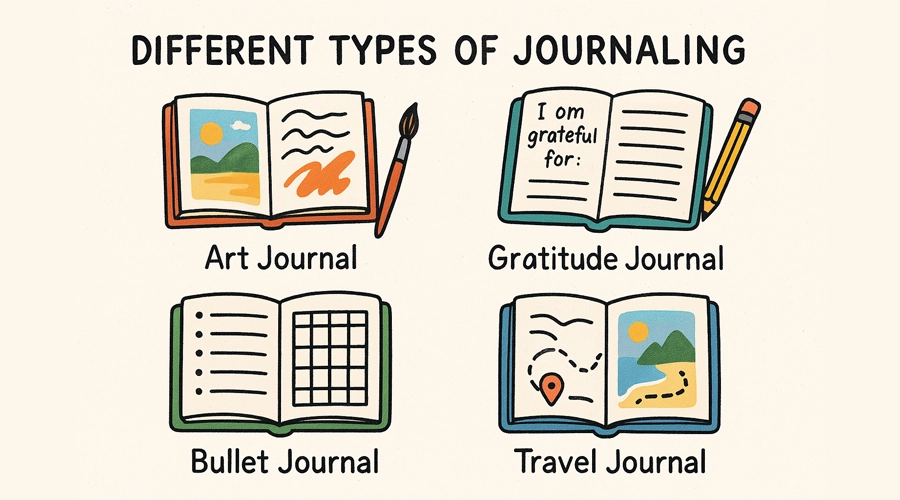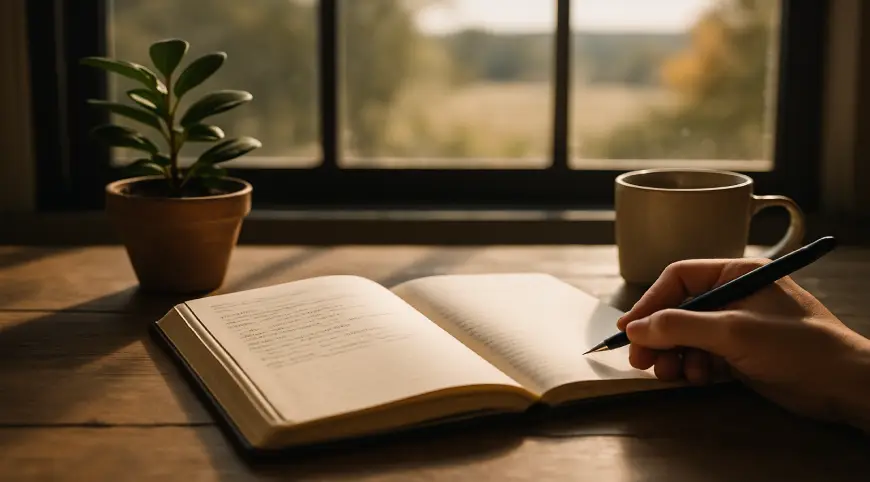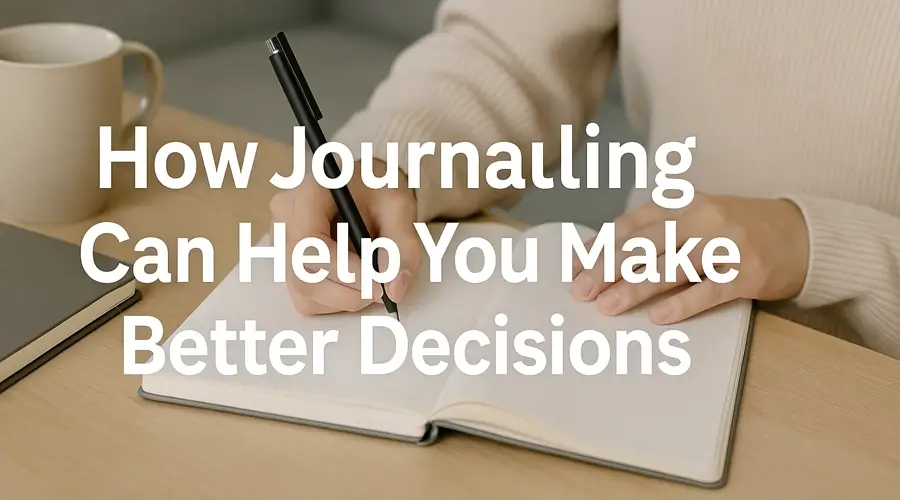In a world overflowing with screens, pings, and endless digital noise, the simple act of journaling has not only survived—but thrived. While apps and AI try to capture our attention, many people are turning inward, back to pen and paper (or sometimes just a blank app screen), to reconnect with themselves in a more meaningful way.
But here’s the thing—journaling today isn’t just about writing down your thoughts before bed. It has evolved into a deeply personal ritual, a creative outlet, a healing tool, and even a system for organizing your life. From expressing emotions to tracking dreams, meals, or memories, there are countless types of journals that cater to different goals and personalities. Each one offers a unique window into who we are—or who we’re becoming.
In this article, we’ll explore the most powerful and popular types of journals, from the adventurous freedom of travel journals to the mindful awareness of food journals, and everything in between. Whether you’re a first-time journaler or looking to reinvent your routine, this guide will help you find the right journaling path for your lifestyle and intentions.
Journaling Today: More Than Just Writing
Journaling has come a long way from the locked diary under your childhood pillow. Today, it’s not just about writing—it’s about exploring your inner world, processing emotions, organizing thoughts, and even designing your future. As our lives have changed, so have the ways we journal.
In the past, journaling was mostly confined to a notebook and a pen—private, personal, and analog. But now, journaling lives across multiple platforms: elegant leather-bound notebooks, phone apps with reminders, digital bullet journals, and even voice memos for those who’d rather speak than write. This evolution has made it easier—and more flexible—than ever to find a journaling style that works for you.
More importantly, the types of journals people use today have also expanded. Some gravitate toward reflective journals to make sense of life’s chaos and to grow emotionally. Others find joy in creative journals, blending words with sketches, poems, or collages to express what they can’t say out loud. And for those seeking healing or clarity, therapeutic journals offer a safe space to untangle thoughts, track moods, or work through trauma.
In other words, journaling today is less about “dear diary” and more about self-awareness, creativity, and wellbeing. And with so many different types of journals to choose from, there’s truly something for everyone.
Travel Journals: More Than Memories
A travel journal isn’t just a list of places you’ve visited or a scrapbook of ticket stubs—it’s a living, breathing archive of emotions, thoughts, and transformations that happen along the journey. While photos capture how things looked, travel journals capture how things felt.
For many, especially those in their 20s and 30s navigating identity, purpose, or simply craving new experiences, this type of journaling offers more than nostalgia. It becomes a mirror for growth. Whether you’re a digital nomad, a weekend wanderer, or a soul-searcher chasing clarity across continents, writing a travel journal helps you process what the trip meant beyond the itinerary.
Unlike other types of journals that focus inward, travel journals often blur the line between external exploration and inner reflection. One page might be about a stunning sunrise in Cappadocia; the next, a sudden realization about what truly matters in life.
What makes travel journaling so powerful is its ability to turn movement into meaning. Over time, you don’t just collect destinations—you collect versions of yourself. And revisiting those entries later? It’s like traveling back to the moment with a wiser lens.
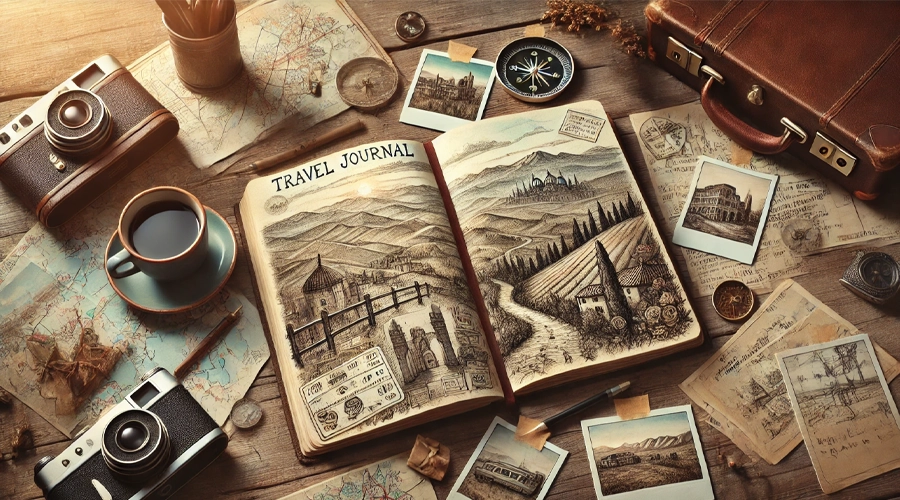
So if you’re someone who wants to make your journeys count—emotionally, spiritually, and personally—a travel journal might be one of the most rewarding types of journals you’ll ever keep.
Food Journals: It’s Not Just About Calories
When most people hear “food journal,” they immediately think of calorie counting or strict diet logs. But in reality, food journals can be so much more than that. They’re not just about what you eat—but why you eat, how you feel when you eat, and how your body and mind respond to it all.
Unlike some types of journals that are more reflective or creative, food journaling can be both deeply practical and surprisingly emotional. For those trying to improve their relationship with food, identify emotional triggers, or uncover hidden habits, a food journal can become a powerful mirror. It’s less about judgment and more about awareness.
Keeping track of what you eat can reveal fascinating patterns: Do you snack more when you’re stressed? Skip meals when you’re overwhelmed? Crave sugar when you’re feeling low? These insights aren’t just useful for fitness—they’re key to emotional wellbeing, too.
Best of all, food journals can be personalized to reflect your goals and lifestyle. You can combine mood tracking with meals, add mindful eating reflections, draw little emojis for how you felt after eating, or even add short voice notes if you’re journaling on the go. Whether you’re trying to heal, grow, or just understand your eating patterns better, this is one of the types of journals that brings body and mind into alignment.
Gratitude Journals: Training the Brain to Notice Joy
It might sound simple—writing down a few things you’re grateful for each day. But don’t let the simplicity fool you. Gratitude journals are one of the most transformative types of journals, not because they track your life, but because they quietly change it.
In a world where stress, comparison, and digital overwhelm are part of daily life, taking just five minutes to reflect on what’s going right can be a radical act. And science agrees: studies have shown that practicing gratitude daily can improve sleep, boost mental health, reduce anxiety, and even strengthen relationships.
But beyond the data, there’s something profoundly human about it. When you commit to noticing the good—no matter how small—you begin rewiring your brain to focus on abundance instead of lack. A warm coffee. A kind message. A quiet morning. These moments, when captured in a gratitude journal, slowly build a foundation of optimism and resilience.
What makes this one of the most accessible and rewarding types of journals is its simplicity. No rules. No pressure. Just you and the choice to see beauty in the everyday.
Dream Journals: Your Subconscious on Paper
Some thoughts only visit us while we sleep. That’s why dream journals are one of the most fascinating and deeply personal types of journals—they capture what the conscious mind forgets and the subconscious tries to tell us.
For introspective thinkers, creatives, and psychology enthusiasts, recording dreams can feel like decoding hidden messages. Whether your dream is a surreal fantasy, an emotional echo, or a vivid replay of something real, writing it down helps you process emotions, notice patterns, and even unlock creative ideas you didn’t know were inside you.
But here’s the tricky part—dreams fade fast. To make the most of a dream journal, consistency is key. Keep it by your bed. Write as soon as you wake up, even if it’s just a sentence or two. Over time, your recall will improve, and your entries will become richer, more detailed, and more revealing.
Interpreting your dreams doesn’t mean following a symbol guide like a horoscope—it means noticing your own recurring themes, emotions, and metaphors. In that way, dream journals aren’t just about dreams. They’re about self-discovery, healing, and creativity.

Among the many types of journals, this one invites you to explore a part of your mind most people never access. And who knows—maybe your next big idea, emotional breakthrough, or moment of clarity is already waiting for you… in your sleep.
Bullet Journals: Planning Meets Self-Expression
There’s a reason why bullet journals have become a cult favorite among Gen Z and Millennials: they’re not just tools for productivity—they’re a space where structure and soul can exist side by side.
Unlike traditional planners, bullet journals let you design your own system. Whether you’re tracking habits, planning your week, setting intentions, or simply unloading thoughts, a bullet journal offers endless flexibility. It’s one of those rare types of journals where productivity meets mindfulness—and creativity is always welcome.
Want clean, minimalist pages? Great. Want colorful doodles, washi tape, and motivational quotes? Go for it. That’s the beauty of it: no two bullet journals ever look the same, because no two lives are the same. You get to decide what goes in, what stays out, and how each page feels. It becomes your planner, your sketchbook, your diary, and your safe space—all rolled into one.
What sets this apart from other types of journals is that it grows with you. As your goals evolve, so can your layout. As your mindset shifts, so can your tone. It’s not static—it’s dynamic, just like you.
Art Journals: When Words Aren’t Enough
Sometimes, words fall short. That’s when art journals step in—a space where color, shape, texture, and emotion collide to say the things we can’t always express through language. These vibrant, personal books are one of the most freeing types of journals, offering a creative outlet that goes beyond traditional writing.
Whether you’re a seasoned artist, a casual doodler, or someone who processes life through imagery, art journaling creates a visual sanctuary for reflection and emotional release. Pages can be filled with drawings, collages, paint splashes, photographs, handwritten lyrics, or anything else that feels true in the moment. There’s no right or wrong—only what feels real.
What makes art journals especially powerful is that they give your inner world a voice—without needing words. They can be raw or refined, abstract or organized, but always deeply personal. And because they’re visual, they allow you to revisit and feel your growth in a way that’s immediate and emotional.
Among the many types of journals, this one is where creativity becomes therapy, and self-expression becomes healing. If you’ve ever struggled to explain how you feel, or if you simply want to make art for the sake of feeling alive, an art journal might be exactly what your soul needs.
Choosing the Right Journal Type for You
With so many types of journals to choose from, it’s easy to feel overwhelmed. Should you go with something structured like a bullet journal? Something expressive like an art journal? Or something introspective like a dream or gratitude journal?
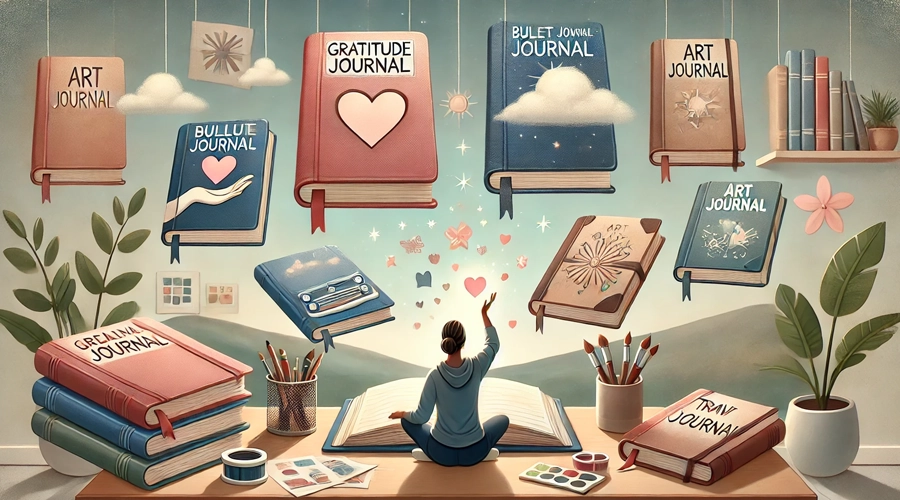
Here’s the good news: there’s no one-size-fits-all. Journaling isn’t about perfection—it’s about connection. The right journal for you is the one that fits your life, your goals, and your emotional needs.
Here’s a quick guide to help you choose:
-
Looking to reduce stress or boost positivity? Try a gratitude journal.
-
Want to understand your habits and patterns? A food journal or bullet journal might work best.
-
Going through a personal journey or emotional phase? A reflective or therapeutic journal can support healing.
-
Craving creativity and freedom? Explore art journals or creative journals.
-
Need a place to capture adventures and insights on the road? Go with a travel journal.
-
Curious about your subconscious mind? Start a dream journal.
And remember, you don’t have to stick to just one. Many people blend multiple types of journals, or switch things up depending on the season of life they’re in.
The most important thing? Start. Your first page doesn’t have to be perfect—it just has to be real. Your journal isn’t about being right. It’s about being you.
Conclusion: The Journal Is a Tool—You Are the Story
At the end of the day, journaling isn’t about being a perfect writer, artist, or planner. It’s about showing up for yourself—one honest entry at a time.
With so many types of journals available, it’s easy to get caught up in choosing the “right” one. But here’s the truth: the best journal is the one you actually use. Whether it’s messy or neat, typed or handwritten, creative or simple—it’s yours. And that makes it powerful.
Let this be your permission to start—even if you don’t know where to begin. Even if your first page is awkward or empty. What matters most is that you begin. Your voice, your thoughts, your experiences—they deserve a space.
Because in the end, the journal is just a tool. You are the story.
Transform your journaling with AI-powered insights from VERBOAI.
Download now from our website and start your smarter journaling journey.
